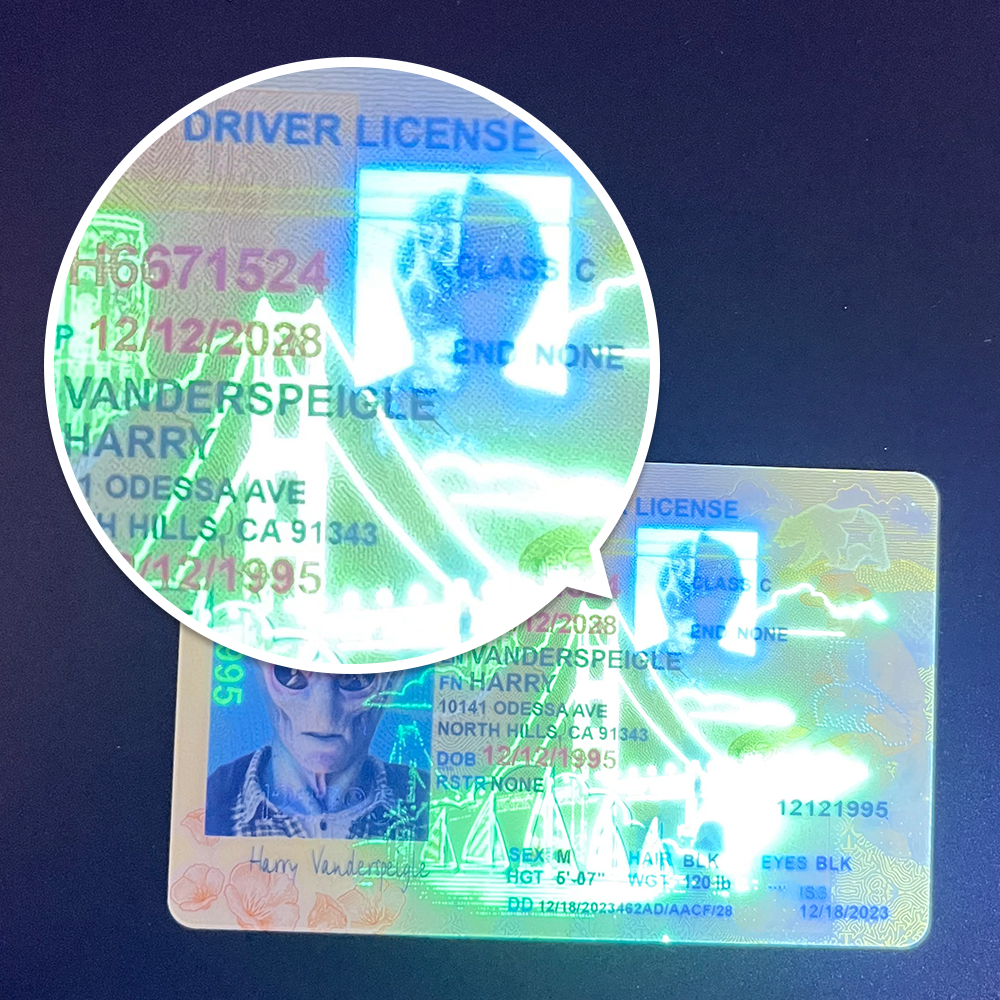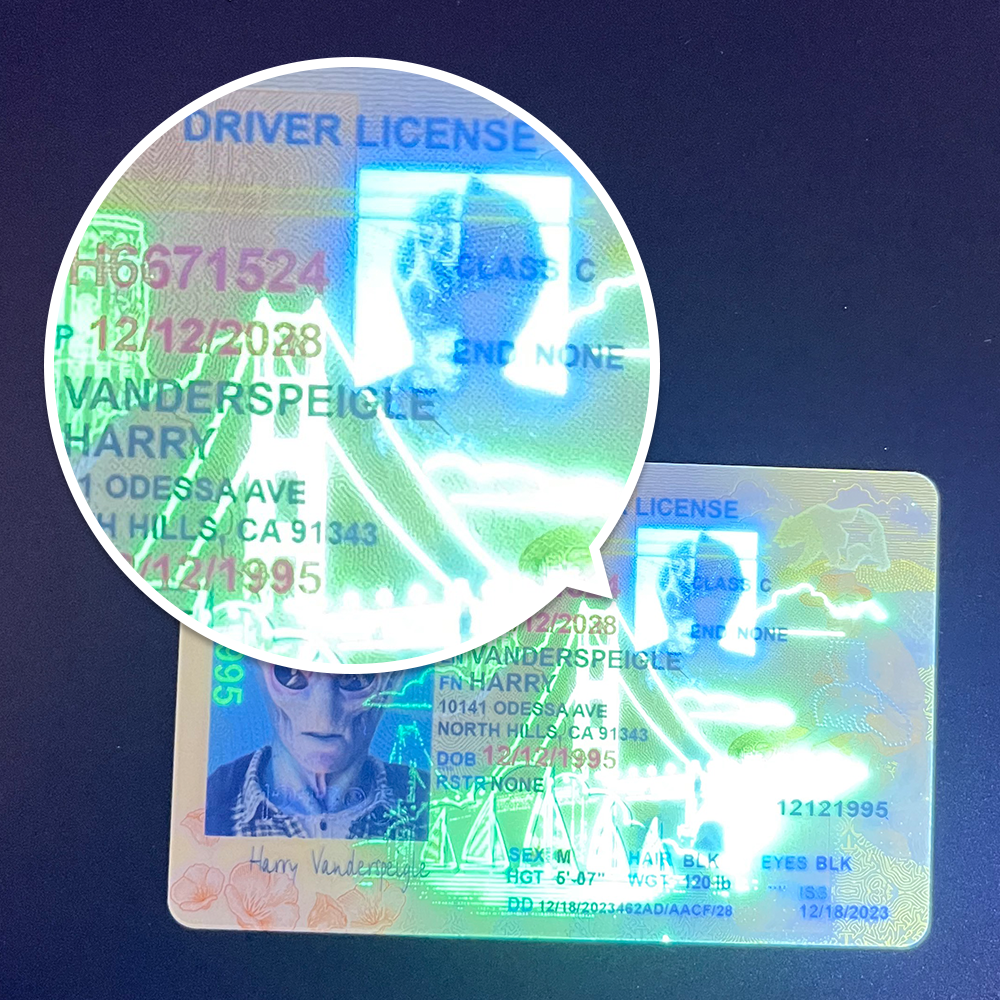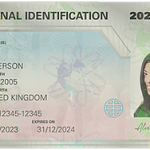Fake IDs have long been a concern in society, and as we approach 2025, the associated risks, particularly those related to identity theft, are becoming even more menacing. The allure of a fake ID might seem like a harmless shortcut for some, whether it’s for accessing under – age restricted venues like bars or clubs, or for other illicit activities. However, the consequences can be far – reaching and extremely damaging.
The Mechanics of Fake ID Production in 2025
In 2025, the technology behind fake ID production has advanced significantly. Counterfeiters are using high – end 3D printers, sophisticated software for photo manipulation, and access to high – quality materials that mimic the real thing. They are able to replicate holograms, microprinting, and other security features that were once thought to be foolproof. For example, some fake IDs now have holographic overlays that are almost indistinguishable from the genuine ones on a casual inspection. This makes it easier for these fake IDs to pass through security checks in places like liquor stores or nightclubs.

The use of the dark web has also facilitated the trade of fake IDs. Sellers on the dark web offer a wide range of fake ID options, often with customizations based on the buyer’s requirements. They use encrypted communication channels to ensure anonymity, making it difficult for law enforcement to track them down. Buyers can provide personal information such as their name, date of birth, and a photo, and in return, receive a fake ID that appears legitimate.
Identity Theft and Fake IDs
One of the most significant risks associated with fake IDs in 2025 is identity theft. When individuals purchase fake IDs, they are often required to provide personal information to the counterfeiter. This information can include sensitive data such as social security numbers, driver’s license numbers, and even credit card details in some cases. Counterfeiters, who are often part of larger criminal networks, can then use this information for a variety of illegal activities.
For instance, they may use the stolen identity to open credit cards in the victim’s name. These criminals can rack up large amounts of debt, leaving the victim with a damaged credit score and a financial mess to clean up. They may also use the identity to apply for loans, further burdening the victim with debt that they did not incur. In addition, identity thieves can use the stolen identity to commit fraud in other areas, such as filing false tax returns and claiming tax refunds that are not rightfully theirs.

Another aspect of identity theft related to fake IDs is the potential for criminal impersonation. If a person with a fake ID is involved in illegal activities and is caught, the authorities may record the fake identity details. This can lead to the real identity owner being wrongly associated with criminal activities, resulting in legal troubles and a stained reputation.
Victims of Identity Theft from Fake ID Scams
Victims of identity theft stemming from fake ID scams can be of all ages and backgrounds. Young people who purchase fake IDs to access age – restricted venues are often the most vulnerable. They may not fully understand the long – term consequences of providing their personal information to counterfeiters. For example, a 17 – year – old who buys a fake ID to enter a club may unknowingly give away their social security number. A few months later, they could find themselves with a credit card bill for thousands of dollars that they did not authorize.
Older individuals can also be victims. Sometimes, they may be targeted by counterfeiters who pose as legitimate ID – verification services. These scammers may trick the elderly into providing their personal information under the guise of helping them update their IDs or for some other supposed official reason. Once the information is in the hands of the criminals, it can be used for identity theft purposes.
Legal Ramifications of Fake IDs and Identity Theft
Both the possession and use of fake IDs are illegal in most jurisdictions. In 2025, the laws regarding fake IDs have become even more stringent in response to the growing problem. Penalties can range from fines to imprisonment, depending on the severity of the offense and the circumstances surrounding it. For example, if a person is caught using a fake ID to purchase alcohol, they may face a relatively small fine and community service. However, if they are involved in a more elaborate scheme involving multiple fake IDs and identity theft, they could face several years in prison.
Identity theft is also a serious crime. Perpetrators can be charged with a variety of offenses, including fraud, identity theft, and conspiracy. The legal system is cracking down hard on these criminals, but it can still be a long and difficult process for victims to recover from the damage done to their identities. Victims may have to spend a significant amount of time and effort proving their innocence and restoring their credit and reputation.
Protecting Yourself from Identity Theft Linked to Fake IDs
There are several steps individuals can take to protect themselves from identity theft related to fake IDs. First and foremost, never provide personal information to untrusted sources. If you are considering obtaining an ID – related service, make sure it is from a legitimate and authorized provider. For example, if you need to renew your driver’s license, go to the official Department of Motor Vehicles office and not to an unknown online service that promises a faster or cheaper alternative.
Regularly monitor your financial accounts. Check your bank statements, credit card statements, and credit reports on a regular basis. Look for any unusual or unauthorized transactions. If you notice something out of the ordinary, report it immediately to your financial institution and the credit reporting agencies. You can also set up alerts on your accounts for large transactions or any changes to your account information.
Be cautious when using the internet. Avoid clicking on suspicious links or downloading files from untrusted sources. Many identity thieves use phishing emails and websites to trick people into providing their personal information. For example, an email that appears to be from your bank asking you to click on a link and update your account information may be a phishing attempt. Instead, go directly to your bank’s official website by typing the URL into your browser.
Secure your personal documents. Keep important documents such as your social security card, birth certificate, and passport in a safe place, such as a locked file cabinet or a safe. If you need to carry a copy of an important document, make sure it is redacted to only show the necessary information.
Common Problems and Solutions
- Problem: Receiving unauthorized credit card charges due to identity theft from fake ID – related information leakage.
Solution: As soon as you notice unauthorized charges on your credit card statement, contact your credit card issuer immediately. They will usually initiate an investigation and may temporarily freeze your account to prevent further unauthorized transactions. You should also file a report with the Federal Trade Commission (FTC) and place a fraud alert on your credit report with the major credit reporting agencies (Equifax, Experian, and TransUnion). This will make it more difficult for identity thieves to open new accounts in your name.
- Problem: Being wrongly associated with criminal activities due to someone using a fake ID with your identity details.
Solution: Contact the local law enforcement agency as soon as you become aware of the situation. Provide them with all the evidence you have to prove your identity and that you were not involved in the alleged criminal activities. You may also need to work with a lawyer who specializes in identity theft and criminal defense cases. Additionally, request a copy of the police report and use it to correct any false information in your criminal record or credit report if necessary.
- Problem: Falling victim to phishing attempts while trying to obtain or verify ID – related information.
Solution: Educate yourself about phishing techniques. Look for signs such as misspelled URLs, generic greetings in emails, and requests for sensitive information. If you are unsure about an email or website, do not click on any links or provide any information. Instead, contact the official organization (such as a bank or government agency) directly using a known phone number or website. You can also install anti – phishing software on your devices, which can help detect and block phishing attempts.
- Problem: Difficulty in detecting a fake ID used in a business transaction as a merchant.
Solution: Train your staff on how to spot fake IDs. Teach them to look for signs such as poor quality printing, incorrect hologram placement, and inconsistent font sizes. Invest in ID – verification tools such as ID scanners, which can check for security features and compare the ID information with a database. Additionally, establish clear policies for refusing service to individuals with suspected fake IDs and reporting such incidents to the authorities.
- Problem: Losing important personal documents that could be used for identity theft in a fake ID scheme.
Solution: If you lose important documents like your social security card or driver’s license, report the loss immediately to the issuing agency. They can help you obtain a replacement and may also take steps to protect your identity. You should also place a fraud alert on your credit report as a precautionary measure. Keep copies of important documents in a separate, secure location, and consider using a document – shredding service to destroy any old or unnecessary documents that contain personal information.
Fake ID Pricing
unit price: $109
| Order Quantity | Price Per Card |
|---|---|
| 2-3 | $89 |
| 4-9 | $69 |
| 10+ | $66 |



